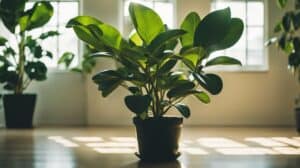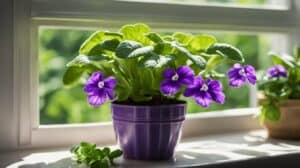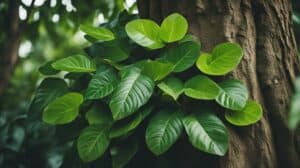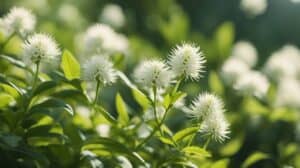The Elegant Lady Palm, also known as Rhapis Excelsa, is a popular indoor plant that is prized for its stunning appearance and ease of care.
With its delicate fronds and graceful form, this plant is a favorite among homeowners and plant enthusiasts alike.
However, like all plants, the Elegant Lady Palm requires proper care and attention to thrive in a home environment.

In this article, readers will learn everything they need to know about mastering Rhapis Excelsa care in their homes.
From selecting the right potting soil to providing the optimal amount of light and water, this guide will provide readers with all the information they need to keep their Elegant Lady Palms healthy and vibrant.
Whether you’re a seasoned plant owner or a novice looking to add a touch of elegance to your home, this article is a must-read for anyone interested in Rhapis Excelsa care.
Understanding Rhapis Excelsa
Origins and Characteristics
Rhapis excelsa, commonly known as the Lady Palm, is a species of fan palm that is native to Southern China and Taiwan.
It is a slow-growing plant that can reach heights of up to 12 feet, but typically grows to around 6-8 feet tall.
The Lady Palm is prized for its elegant appearance, with its slender stems and fan-shaped leaves that are dark green and glossy.
The leaves are divided into several segments, giving them a delicate and intricate look.
One of the unique characteristics of the Lady Palm is its ability to tolerate low light conditions, making it an excellent choice for indoor cultivation.
It is also relatively low-maintenance and can thrive in a range of temperatures, from 50-85°F.
Varieties of Lady Palm
While Rhapis excelsa is the most common species of Lady Palm, there are several other varieties that are also popular among plant enthusiasts.
These include:
-
Rhapis humilis: A smaller variety of Lady Palm that typically grows to around 3-4 feet tall. It has thinner stems and smaller leaves than Rhapis excelsa.
-
Rhapis multifida: This variety has more finely divided leaves than Rhapis excelsa, giving it a more delicate appearance.
It is also more cold-tolerant than other Lady Palm varieties.
-
Rhapis subtilis: A dwarf variety of Lady Palm that grows to only 2-3 feet tall. It has thin stems and small leaves that are finely divided.
Overall, the Lady Palm is a beautiful and versatile plant that can add an elegant touch to any home or office.
By understanding its origins and characteristics, as well as the different varieties available, you can master Rhapis excelsa care and enjoy the beauty of this plant for years to come.
Essential Care Guidelines

Lighting Requirements
The Elegant Lady Palm thrives in bright, indirect light.
Direct sunlight can cause damage to the leaves, so it’s best to place the plant in a location that receives filtered light.
If the plant is not getting enough light, the leaves may turn yellow and drop off.
On the other hand, too much light can cause the leaves to burn and turn brown.
It’s important to strike a balance and find the right amount of light for your plant.
Watering Regimen
The Elegant Lady Palm prefers consistently moist soil, but it’s important not to overwater. Overwatering can lead to root rot and other issues.
It’s recommended to water the plant thoroughly when the top inch of soil feels dry to the touch.
It’s important to ensure that the soil has good drainage to prevent water from sitting in the bottom of the pot.
Soil and Fertilization
The Elegant Lady Palm prefers well-draining soil that is rich in organic matter.
A good potting mix for this plant should contain peat moss, perlite, and vermiculite.
Fertilize the plant every two to three months during the growing season with a balanced fertilizer.
Be careful not to over-fertilize, as this can cause damage to the plant.
Temperature and Humidity Control
The Elegant Lady Palm prefers temperatures between 60 and 80 degrees Fahrenheit.
It’s important to keep the plant away from drafts and sudden temperature changes.
The plant also prefers high humidity levels, so it’s recommended to mist the leaves regularly or place a humidifier nearby.
If the air in your home is too dry, you can also place a tray of water near the plant to help increase humidity levels.
By following these essential care guidelines, you can master Rhapis Excelsa care and enjoy a thriving Elegant Lady Palm in your home.
Common Challenges and Solutions

Pest Prevention and Management
The Elegant Lady Palm is susceptible to pest infestations, which can cause significant damage to the plant if left untreated.
Common pests that affect the Rhapis excelsa include spider mites, mealybugs, and scale insects.
To prevent pests from infesting your plant, it is essential to maintain a clean and healthy environment.
Regularly dusting the leaves and inspecting the plant for signs of pests can help catch infestations early on.
Additionally, avoid overwatering the plant, as this can create a humid environment that is ideal for pests.
If you do notice pests on your Elegant Lady Palm, there are several management solutions to consider.
Natural remedies such as neem oil or insecticidal soap can be effective in controlling infestations.
For severe infestations, it may be necessary to use a chemical pesticide, but be sure to follow the instructions carefully and use caution to avoid harming the plant.
Disease Control
Like all plants, the Elegant Lady Palm can be susceptible to various diseases.
One common issue is root rot, which can occur if the plant is overwatered or if the soil does not drain properly.
Signs of root rot include yellowing leaves and a foul odor coming from the soil.
To prevent root rot, it is important to ensure that the plant is not overwatered and that the soil is well-draining.
If you suspect root rot, remove the plant from the soil and trim away any damaged roots before repotting in fresh, well-draining soil.
Handling Leaf Browning
Leaf browning is a common issue with the Elegant Lady Palm and can be caused by various factors, including overwatering, underwatering, low humidity, or exposure to direct sunlight.
To prevent leaf browning, it is important to maintain a consistent watering schedule and ensure that the plant is not exposed to direct sunlight.
If you do notice leaf browning, there are several steps you can take to address the issue.
First, trim away any browned or damaged leaves to prevent further damage.
Increase humidity levels around the plant by misting the leaves or placing a humidifier nearby.
Finally, adjust the plant’s positioning to avoid direct sunlight and maintain a consistent watering schedule.
Propagation and Repotting

Propagation Techniques
The Elegant Lady Palm, also known as Rhapis excelsa, can be propagated in two ways: by division or by seeds. Division is the easiest and most common method.
To divide the plant, gently remove it from its pot and separate the individual stems. Each stem should have a good root system and at least one healthy leaf.
Plant the stems in a new pot with fresh potting soil, water thoroughly, and place in a bright, indirect light.
Another way to propagate the Elegant Lady Palm is by seeds. However, this method is more challenging and time-consuming.
The seeds are slow to germinate and require a warm, humid environment to grow.
To increase the chances of success, it is recommended to use a seed-starting mix and cover the container with plastic wrap to create a mini greenhouse.
Keep the soil moist and warm, and the seeds should germinate in several weeks.
Repotting Steps
The Elegant Lady Palm prefers to be slightly root-bound, so it does not need to be repotted frequently.
However, if the plant has outgrown its current pot, it is time to repot. Here are the steps to follow:
- Choose a new pot that is one size larger than the current one. Make sure it has drainage holes at the bottom.
- Fill the new pot with fresh potting soil. Use a mix of peat moss, perlite, and sand for best results.
- Gently remove the plant from its current pot, being careful not to damage the roots.
If the roots are tightly packed, loosen them gently with your fingers.
- Place the plant in the new pot and fill the gaps with additional potting soil. Make sure the plant is at the same level as before.
- Water the plant thoroughly and place it in a bright, indirect light. Avoid direct sunlight, as it can burn the leaves.
By following these simple propagation and repotting techniques, anyone can master the care of the Elegant Lady Palm and enjoy its beauty and elegance in their home.
Frequently Asked Questions

What are the ideal watering requirements for a Lady Palm indoors?
Lady Palms prefer to be kept evenly moist, but not waterlogged.
Watering once a week is usually sufficient, but it’s important to ensure that the soil is not too dry or too wet.
It’s best to water the plant thoroughly, allowing the water to drain out of the bottom of the pot.
Avoid letting the plant sit in standing water, as this can lead to root rot.
How can you propagate a Lady Palm from cuttings?
Propagation of a Lady Palm is typically done by dividing the plant at the root ball.
This is best done in the spring or early summer when the plant is actively growing.
It’s important to ensure that each division has a healthy root system and several leaves.
Propagation from cuttings is possible, but it can be difficult and is not recommended for beginners.
What are the benefits of having a Lady Palm in the bedroom?
Lady Palms are known for their air-purifying qualities, and they can help to improve indoor air quality by removing pollutants such as formaldehyde, benzene, and trichloroethylene.
They also release oxygen into the air, which can help to improve sleep quality.
Additionally, Lady Palms are non-toxic to pets, making them a great choice for pet owners.
Does a Lady Palm require direct sunlight to thrive?
Lady Palms prefer bright, indirect light, but they can also tolerate lower light levels.
Direct sunlight can cause the leaves to burn, so it’s best to place the plant in a location that receives filtered or indirect light.
If the plant is not receiving enough light, the leaves may turn yellow or brown.
Can Rhapis Excelsa be grown outdoors, and what care does it need?
Rhapis Excelsa can be grown outdoors in USDA Zones 9-11, but it’s important to ensure that the plant is protected from direct sunlight and strong winds.
The plant prefers well-draining soil and regular watering, but it can tolerate some drought.
Outdoor plants may need to be fertilized more frequently than indoor plants.
How do you ensure proper indoor care for a Rhapis Excelsa plant?
To ensure proper indoor care for a Rhapis Excelsa plant, it’s important to provide the plant with bright, indirect light and to keep the soil evenly moist.
The plant should be fertilized every two to four weeks during the growing season, and the leaves should be wiped down with a damp cloth to remove dust and debris.
It’s also important to ensure that the plant is not exposed to cold drafts or temperatures below 50°F (10°C).














